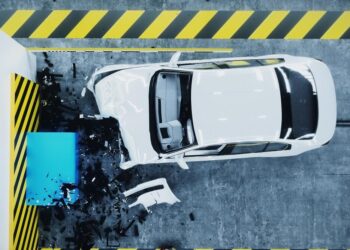Accidents with injuries happen every day in and around Thousand Oaks. In most of those accidents, the person or entity that caused it has some type of liability insurance coverage. That liability insurer isn’t in the business of handing out money to people who claim to be injured by its policyholders though. In fact, it wants to compensate claimants with as little money as possible for their injuries and damages. Sometimes, it might even deny a personal injury claim in its entirety.
Devaluing a Personal Injury Claim
Nearly all insurance companies are going to perform a thorough investigation of an accident and any injuries claimed. One of the first things that a liability insurance adjuster will do on a new claim is to make a determination on is who was at fault for an accident.
Sometimes liability is clear, like when a claimant was in a car and stopped at a red light for10 seconds when he or she was rear-ended by a drunk driver who was traveling 40 mph at the time of impact. At other times, liability isn’t so clear like when a shopper at Vons fails to see a broken jar of mayonnaise in a store aisle, steps on it and falls because the shopper was looking at their phone while sending a text message when pushing a shopping cart with a child in it.
That’s when California comparative negligence laws are triggered.
Comparative Negligence in California
The law of comparative negligence is a defense that allows for assigning partial fault for an accident between the parties to that accident. Once a determination of fault has either been agreed upon by the parties or determined by a judge or jury, any award by a judge or jury is reduced by the percentage of negligence attributed by a judge or jury.
For example, in the slip-and-fall case at Vons, the claimant might be determined to be 40% at fault for not exercising due care and caution to prevent injury to himself or herself. Accordingly, a $100,000 award would be reduced to $60,000.
Pure Comparative Negligence
Most states that recognize comparative negligence draw the line at the claimant being less than 50 or 51% at fault in order to be awarded a recovery. Those are known as modified comparative negligence states. California is what’s known as a pure comparative negligence state where in theory, a claimant can be determined to be 99% at fault for an accident, but still, recover 1% of their damages. Of course, in the alternative, a judge or jury could decide that the claimant was 100% at fault and render a not guilty verdict in favor of the defendant.
Apportioning a percentage of liability to a claimant and determining damages are the primary tasks for a judge or jury when comparative negligence is alleged. In a bench trial, the judge will make that determination. In a jury trial, the jury will make it.
Contact a Thousand Oaks Personal Injury Attorney
If an opposing insurance company contacts you and starts to ask or allege that you were partially at fault for your accident, deny it, terminate the call, and call the Thousand Oaks personal injury lawyers at Quirk Accident & Injury Lawyers, APC for a free and confidential consultation and case evaluation. We’ll be pleased to hear your side of the story and answer your questions. Then, we can discuss all of your legal options.










